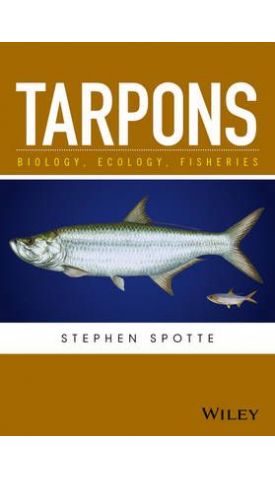אנו משתמשים ב-Cookies כדי לשפר את החוויה שלך. כדי לקיים ההנחיה החדשה של e-Privacy, עלינו לבקש את הסכמתך להגדיר את ה-Cookies. קבלת מידע נוסף.
808.00 ₪
Tarpons - Biology, Ecology, Fisheries
808.00 ₪
ISBN13
9781119185499
יצא לאור ב
Hoboken
זמן אספקה
21 ימי עסקים
עמודים
344
פורמט
Hardback
תאריך יציאה לאור
15 ביולי 2016
Stephen Spotte, Mote Marine Laboratory, Sarasota, Florida, USA Tarpons arose from an ancient lineage, and just two species exist today, confined to the tropics and subtropics: Megalops atlanticus in the western and eastern Atlantic and Megalops cyprinoides distributed widely across the Indo-West Pacific. The Atlantic tarpon is considered king of the saltwater sport fishes and supports a multi-billion dollar recreational fishery in the U.S. alone. The Pacific tarpon, which is much smaller, is less valued by anglers. Both have limited commercial value but offer considerable potential for future aquaculture because of their hardiness, rapid growth, and ease of adaptation to captivity. This book is the latest and most thorough text on the biology, ecology, and fisheries (sport and commercial) of tarpons. The chapters comprise clear, intricate discourses on such subjects as early development and metamorphosis, population genetics, anatomical and physiological features and adaptations, migrations, reproductive biology, and culminate with a concise overview of the world's tarpon fisheries.
A comprehensive appendix includes Spotte's original translations of important papers published previously by others in Spanish and Portuguese and unavailable until now to English readers. Tarpons: Biology, Ecology, Fisheries will be of considerable interest and use to fishery and research biologists, marine conservationists, aquaculturists, and informed anglers
| עמודים | 344 |
|---|---|
| פורמט | Hardback |
| ISBN10 | 1119185491 |
| יצא לאור ב | Hoboken |
| תאריך יציאה לאור | 15 ביולי 2016 |
| תוכן עניינים | Preface vii Acknowledgements xi Symbols and abbreviations xii 1 Development 1 1.1 Introduction 1 1.2 The tarpon leptocephalus 1 1.3 Staging tarpon ontogeny 4 1.4 Development of Atlantic tarpons 10 1.5 Development of Pacific tarpons 24 1.6 Leptocephalus physiology 33 2 Growth 39 2.1 Introduction 39 2.2 The cube law 40 2.3 Sexually dimorphic growth 41 2.4 Condition 44 2.5 Growth rate 49 2.6 Modeling growth 52 2.7 Tarpon larvae 58 3 Spawning 59 3.1 Introduction 59 3.2 Fecundity and early survival 59 3.3 Where tarpons spawn 64 3.4 When tarpons spawn 68 3.5 Size and age at maturity Atlantic tarpons 72 3.6 Size and age at maturity Pacific tarpons 78 4 Recruitment 80 4.1 Introduction 80 4.2 Life in the plankton 80 4.3 Inshore migration 83 4.4 Offshore migration 85 4.5 Mechanisms of recruitment 88 4.6 Factors affecting recruitment 89 5 Breathing and respiration 96 5.1 Introduction 96 5.2 Water -breathing 97 5.3 Air -breathing 100 5.4 Cardiovascular function 108 5.5 Hypoxia 113 5.6 Hypercapnia 125 5.7 Air -breathing as social behavior 126 6 Osmo - and ionoregulation 128 6.1 Introduction 128 6.2 Osmo- and ionoregulation 130 6.3 Ionocytes 132 6.4 Acid -base regulation 136 6.5 Ammonia excretion 137 6.6 Euryhaline transition 141 6.7 Endocrine factors 144 6.8 Eggs and larvae 147 7 Ecology 152 7.1 Introduction 152 7.2 Habitats 152 7.3 Predators of tarpons 159 7.4 Environmental factors affecting survival 162 7.5 Gregariousness 166 7.6 Seasonal movements 167 7.7 Feeding and foods 174 8 Fisheries 186 8.1 Introduction 186 8.2 Recreational fisheries 186 8.3 Handling 190 8.4 Stress effects 195 8.5 Commercial fisheries 211 8.6 Aquaculture 215 8.7 Populations 219 8.8 Final note: whom should we save? 224 Appendices 232 References 286 Index 323 |
| זמן אספקה | 21 ימי עסקים |



Login and Registration Form